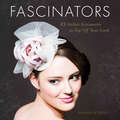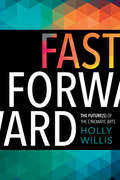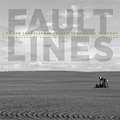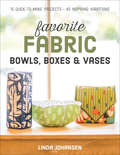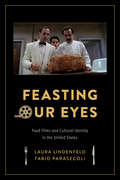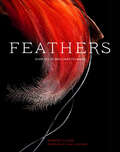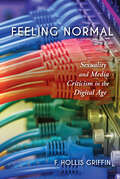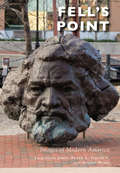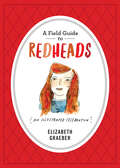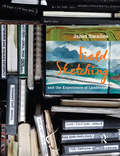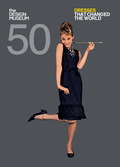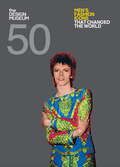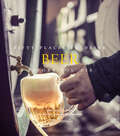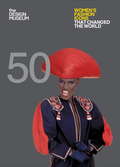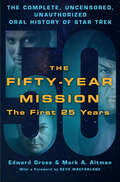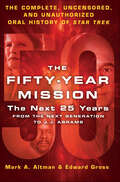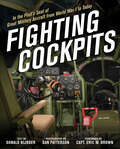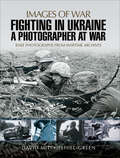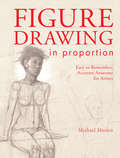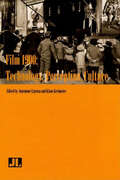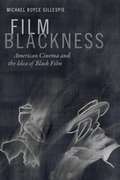- Table View
- List View
Fascinators: 25 Stylish Accessories to Top Off Your Look
by Hannah ScheidigA fascinator is a chic little adornment, not quite a traditional hat but more than a headband, that suits any occasion and any time of day. Style mavens in England are credited with setting off an international fascination with fascinators; this smashing headwear now appears everywhere, donning the heads of celebrities and A-listers on the red carpet to today's fashionable brides, who are tossing aside their traditional veils for fascinators bedazzled with crystals and feathers. This is the first craft book of its kind with how-tos for fascinators, floral crowns, tiaras, and more: 25 in all, plus variations on each project--there are even sweet projects suitable for little girls. Fascinators range from dressy professional to black-tie elegant.
Fast Forward: The Future(s) of the Cinematic Arts
by Holly WillisCinema, the primary vehicle for storytelling in the twentieth century, is being reconfigured y new media in the twenty-first. Terms such as "worldbuilding," "virtual reality," and "transmedia" introduce new methods for constructing a screenplay and experiencing and sharing a story. Similarly, 3D cinematography, hypercinema, and visual effects require different modes for composing an image, and virtual technology, motion capture, and previsualization completely rearrange the traditional flow of cinematic production. What does this mean for telling stories? Fast Forward answers this question by investigating a full range of contemporary creative practices dedicated to the future of mediated storytelling and by connecting with a new generation of filmmakers, screenwriters, technologists, media artists, and designers to discover how they work now, and toward what end. From Chris Milk and Aaron Koblin's exploration of VR spherical filmmaking to Rebeca Méndez's projection and installation work exploring climate change to the richly mediated interactive live performances of the collective Cloud Eye Control, this volume captures a moment of creative evolution and sets the stage for imagining the future of the cinematic arts.
Fast Forward: The Future(s) of the Cinematic Arts
by Holly WillisCinema, the primary vehicle for storytelling in the twentieth century, is being reconfigured by new media in the twenty-first. Terms such as "worldbuilding," "virtual reality," and "transmedia" introduce new methods for constructing a screenplay and experiencing and sharing a story. Similarly, 3D cinematography, hypercinema, and visual effects require different modes for composing an image, and virtual technology, motion capture, and previsualization completely rearrange the traditional flow of cinematic production. What does this mean for telling stories? Fast Forward answers this question by investigating a full range of contemporary creative practices dedicated to the future of mediated storytelling and by connecting with a new generation of filmmakers, screenwriters, technologists, media artists, and designers to discover how they work now, and toward what end. From Chris Milk and Aaron Koblin's exploration of VR spherical filmmaking to Rebeca Méndez's projection and installation work exploring climate change to the richly mediated interactive live performances of the collective Cloud Eye Control, this volume captures a moment of creative evolution and sets the stage for imagining the future of the cinematic arts.
Fault Lines: Life and Landscape in Saskatchewan's Oil Economy
by Emily Eaton Valerie ZinkOil is not new to Saskatchewan. Many of the wells found on farmland across the province date back to the 1950s when the industry began to spread. But there is little doubt that the recent boom (2006–2014) and subsequent downturn in unconventional oil production has reshaped rural lives and landscapes. While many small towns were suffering from depopulation and decline, others reoriented themselves around a booming oil industry. In place of the abandoned houses and shuttered shops found in many small towns in Saskatchewan, housing developments sprang up with new trucks and boats parked in driveways. Yet people in oil-producing areas also lived amid flare stacks that made them ill, had trouble finding housing due to vacancy rates that were among the lowest in the country, suffered through family breakdown because of long working hours and time spent away from home, and endured spills and leaks that contaminated their land. In the summer of 2014, at the height of the boom, geographer Emily Eaton and photographer Valerie Zink travelled to oil towns across the province, from the sea-can motel built from shipping containers on the outskirts of Estevan to seismic testing sites on Thunderchild First Nation’s Sundance grounds.
Favorite Fabric Bowls, Boxes & Vases
by Linda JohansenThe author of Fast Fun & Easy Fabric Bowls shares how to make beautiful containers out of fabric with these 15 easy projects.Organize every room in your home with decorative fabric bowls, boxes, and vases! With 15 projects you can easily make in a day, best-selling author Linda Johansen teaches you to sew sturdy fabric containers of all shapes and sizes to corral your odds and ends. Each pattern includes stylish variations and embellishments ranging from artistic to playful. Ideal for gift giving and displaying treasured fabrics, these handpicked projects are perfect to make, use, and share. We bet you can’t stop at just one!• 15 addictive projects, plus variations and embellishments to make them your own• Organize every room in the house! Containers of all shapes and sizes to get you sewing• Time-tested patterns from bestselling author Linda Johansen
Fear, Illustrated: Transforming What Scares Us
by Julie M. ElmanThe Fear Project is a visually stunning, light-hearted, and compelling visual exploration of the fears people confront in their daily lives. For many years artist Julie Elman has collected common and not-so-common fears people have shared with her. Elman transforms the fears from words into multi-media collages full of color and intensity. The fears include death, failure, losing a child, losing one's voice, losing one's mind, centipedes in the shower, needles, cancer, speaking honestly with one's spouse, seaweed, getting arrested at Disney World, biscuits and clusters of small holes. The resulting work presents a wide range of emotions while subtly endorsing the spirit of confronting, releasing, and moving on from fears. "I have learned that 'Onward! ' is a word with a lot of power behind it, " writes Elman. When presented with these tangible interpretations of our deep fears, we will often feel less burdened by them. Fear is a universal emotion; this is an inviting, visually arresting, and unusually light-hearted treatment. Those looking for an antidote to the news or a follow-up to Humans of New York will appreciate Elman's quirky, magnetic, uplifting images.
Feasting Our Eyes: Food Films and Cultural Identity in the United States
by Fabio Parasecoli Laura LindenfeldBig Night (1996), Ratatouille (2007), and Julie and Julia (2009) are more than films about food-they serve a political purpose. In the kitchen, around the table, and in the dining room, these films use cooking and eating to explore such themes as ideological pluralism, ethnic and racial acceptance, gender equality, and class flexibility-but not as progressively as you might think. Feasting Our Eyes takes a second look at these and other modern American food films to emphasize their conventional approaches to nation, gender, race, sexuality, and social status. Devoured visually and emotionally, these films are particularly effective defenders of the status quo.Feasting Our Eyes looks at Hollywood films and independent cinema, documentaries and docufictions, from the 1990s to today and frankly assesses their commitment to racial diversity, tolerance, and liberal political ideas. Laura Lindenfeld and Fabio Parasecoli find women and people of color continue to be treated as objects of consumption even in these modern works and, despite their progressive veneer, American food films often mask a conservative politics that makes commercial success more likely. A major force in mainstream entertainment, American food films shape our sense of who belongs, who has a voice, and who has opportunities in American society. They facilitate the virtual consumption of traditional notions of identity and citizenship, reworking and reinforcing ingrained ideas of power.
Feathers: Displays of Brilliant Plumage
by Carl Zimmer Robert ClarkExquisite images from award-winning National Geographic photographer Robert Clark offer a captivating perspective on the vast beauty and myriad functions of a seemingly simple thing: the bird feather. Each detailed close-up is paired with informative text about the utility and evolution of the feather it depicts, making this handsome marriage of art and science the ideal book for bird lovers, natural history buffs, and photography enthusiasts.
Feedsack Secrets: Fashion from Hard Times
by Gloria NixonA quilt historian chronicles the fascinating yet untold story of feedsack quilts made in America during the Great Depression and WWII. Feedsacks weren&’t meant for anything more than their name implies until hard times changed the way people looked at available resources. In the 1930s and 40s, quilters facing poverty and fabric shortages found that these cotton bags could be repurposed into something beautiful. Manufacturers capitalized on the trend by designing their bags with stylish patterns, like the iconic gingham. In Feedsack Secrets, quilt historian Gloria Nixon shares the story of the patterned feedsack with research culled from old farm periodicals, magazines and newspapers. Along the way, she reveals how women met for sack-and-snack-club fabric swaps; there were restrictions on jacket lengths, hem depths and the sweep of a skirt; and feedsack prints and bags played a part in political contests, even accurately predicting that Truman would win the 1948 presidential election.
Feeling Normal: Sexuality and Media Criticism in the Digital Age
by F. Hollis GriffinThe explosion of cable networks, cinema distributors, and mobile media companies explicitly designed for sexual minorities in the contemporary moment has made media culture a major factor in what it feels like to be a queer person. F. Hollis Griffin demonstrates how cities offer a way of thinking about that phenomenon. By examining urban centers in tandem with advertiser-supported newspapers, New Queer Cinema and B-movies, queer-targeted television, and mobile apps, Griffin illustrates how new forms of LGBT media are less "new" than we often believe. He connects cities and LGBT media through the experiences they can make available to people, which Griffin articulates as feelings, emotions, and affects. He illuminates how the limitations of these experiences—while not universally accessible, nor necessarily empowering—are often the very reasons why people find them compelling and desirable.
Fell's Point (Images of Modern America)
by Jacqueline Greff Jeffrey Bejma Frank L. Tybush VFell's Point history can be told as a "tale of two cities:" abolitionists and violent secessionists; fire-bombing murderers and community organizers; million-dollar condos and low-income projects; and world champion boxers and a myriad of panhandlers. This dichotomy has created a neighborhood unlike any other in Baltimore. One of the oldest neighborhoods in America, Fell's Point has witnessed much in its 300-plus years. Originally Baltimore's deepwater seaport, Fell's Point's privateers were crucial to winning of the War of 1812. After shipbuilding moved out and waves of immigrants moved through the community, it gradually fell into decline in the first half of the 20th century. In the 1960s, dedicated preservationists began a decade-plus-long battle to defeat city plans to demolish it for a highway. Today, Fell's Point is a thriving, artistic, and eccentric community that welcomes one and all to experience its history, its culture, and its people.
A Field Guide to Redheads: An Illustrated Celebration
by Elizabeth GraeberA unique and beautiful gift for the redhead in your life. A Field Guide to Redheads celebrates that rarest of creatures—people with red hair account for less than 2% of the population—in the most whimsical and irresistible way. Illustrated by Elizabeth Graeber, a redhead herself, this pretty little hardcover gift book presents a pantheon of 100 famous redheads, both real and fictional. Each page is a treat in how it surprises and pleases, acting as a field guide to every type of redhead, whether amber or auburn, ginger or strawberry: David Bowie and Rita Hayworth; Archie, Adele, and Axl Rose; Malcolm X, Sylvia Plath, and Yosemite Sam; Eric the Red, Louis C.K., Anne of Green Gables; Woody Woodpecker and Morris the Cat. Not to mention Napoleon, Shirley Temple, and those Raggedy Twins, Ann and Andy. If you are a redhead, celebrate your place among such distinguished company. If you love, or are loved by, a redhead, discover just how special the world is that you orbit.
A Field Guide to Redheads: An Illustrated Celebration
by Elizabeth GraeberA unique and beautiful gift for the redhead in your life.A Field Guide to Redheads celebrates that rarest of creatures—people with red hair account for less than 2% of the population—in the most whimsical and irresistible way. Illustrated by Elizabeth Graeber, a redhead herself, this pretty little hardcover gift book presents a pantheon of 100 famous redheads, both real and fictional. Each page is a treat in how it surprises and pleases, acting as a field guide to every type of redhead, whether amber or auburn, ginger or strawberry: David Bowie and Rita Hayworth; Archie, Adele, and Axl Rose; Malcolm X, Sylvia Plath, and Yosemite Sam; Eric the Red, Louis C.K., Anne of Green Gables; Woody Woodpecker and Morris the Cat. Not to mention Napoleon, Shirley Temple, and those Raggedy Twins, Ann and Andy. If you are a redhead, celebrate your place among such distinguished company. If you love, or are loved by, a redhead, discover just how special the world is that you orbit.
Field Sketching and the Experience of Landscape
by Janet SwailesThe act of field sketching allows us to experience the landscape first-hand – rather than reliance upon plans, maps and photographs at a distance, back in the studio. Aimed primarily at landscape architects, Janet Swailes takes the reader on a journey through the art of field sketching, providing guidance and tips to develop skills from those starting out on a design course, to those looking to improve their sketching. ?Combining techniques from landscape architecture and the craft and sensibilities of arts practice, she invites us to experience sensations directly out in the field to enrich our work: to look closely at the effects of light and weather; understand the lie and shapes of the land through travel and walking; and to consider lines of sight from the inside out as well as outside in. Full colour throughout with examples, checklists and case studies of other sketchers’ methods, this is an inspirational book to encourage landscape architects to spend more time in the field and reconnect with the basics of design through drawing practice.
Fifty Dresses That Changed the World: Design Museum Fifty (Design Museum Fifty Ser.)
by Design Museum Enterprise LimitedEverything around us is designed and the word 'design' has become part of our everyday experience. But how much do we know about it? Fifty Dresses That Changed the World imparts that knowledge listing the top 50 dresses that have made a substantial impact in the world of British design today. From the 1915 Delphos Pleated dress to Hussein Chalayan's 2007 LED dress, each entry offers a short appraisal to explore what has made their iconic status and the designers that give them a special place in design history.
Fifty Men's Fashion Icons that Changed the World: Design Museum Fifty (Design Museum Fifty)
by Dan Jones Design Museum Enterprise LimitedPainfully cool and instantly recognisable, the 50 style trailblazers in this collection used fashion to attract attention, gain influence, express themselves and make powerful statements. From Fred Astaire to Prince, Marlon Brando to Bob Dylan, JFK to Fred Perry, this book covers the looks and stories of politicians and actors, musicians and designers. With stunning photography, this book is the perfect gift for fashionistas, design students, and anyone who loves good style!
Fifty Places to Drink Beer Before You Die: Beer Experts Share the World's Greatest Destinations (Fifty Places Ser.)
by Chris SantellaA beautiful guide to the world’s fifty best places to enjoy a beer, from Alabama to Zimbabwe, as chosen by experts connected to the industry.What is the most unforgettable place you’ve ever taken a refreshing sip of a cold beer? In Fifty Places to Drink Beer Before You Die, Chris Santella explores the best destinations to crack open a cold one, reflect on the day, and take in the scenery. The book features the world’s top locations for imbibing, from beautiful landscapes to beer festivals, breweries, classic drinking establishments, and brand-new, under-the-radar spots. With a mix of national and international places to visit—Asheville, Denver, Prague, Munich, Vienna, and more—as well as firsthand accounts from contributors such as Jim Koch (founder of Boston Brewing Company/ Samuel Adams) and Joe Wiebe (author of Craft Beer Revolution), this book will make you want to trek to each must-see destination. Packed with beautiful, vibrant photographs that bring each locale to life, Fifty Places to Drink Beer Before You Die will leave you craving barley and hops and eagerly planning your next trip.
Fifty Women's Fashion Icons that Changed the World: Design Museum Fifty (Design Museum Fifty)
by Lauren Cochrane Design Museum Enterprise LimitedFashion is a powerful thing. It can be used for self-expression, to make a political statement, or simply to attract attention. Through this stunning collection, discover how these 50 trendsetters - from Twiggy to Wallis Simpson, Tilda Swinton to Michelle Obama - have used fashion to assert their position in the world and become iconic. With stunning photography selected by the Design Museum, in conjunction with Lauren Cochrane, Assistant Fashion Editor at the Guardian, Fifty Women's Fashion Icons is the perfect gift for design lovers and fashion followers of all ages.
The Fifty-Year Mission: The Complete, Uncensored, Unauthorized Oral History of Star Trek
by Edward Gross Mark A. AltmanThis is the unauthorized, uncensored and unbelievable true story behind the making of a pop culture phenomenon. The original Star Trek series debuted in 1966 and has spawned five TV series spin-offs and a dozen feature films, with an upcoming one from Paramount arriving in 2016. The Fifty-Year Mission is a no-holds-barred oral history of five decades of Star Trek, told by the people who were there. Hear from the hundreds of television and film executives, programmers, writers, creators and cast as they unveil the oftentimes shocking story of Star Trek's ongoing fifty-year mission -a mission that has spanned from the classic series to the animated show, the many attempts at a relaunch through the beloved feature films. Make no mistake, this isn't just a book for Star Trek fans. Here is a volume for all fans of pop culture and anyone interested in the nuts and bolts of a television touchstone.
The Fifty-Year Mission: The Next 25 Years
by Edward Gross Mark A. AltmanThis is the true story behind the making of a television legend. There have been many books written about Star Trek, but never with the unprecedented access, insight and candor of authors Mark A. Altman and Edward Gross. Having covered the franchise for over three decades, they’ve assembled the ultimate guide to a television classic. The Fifty-Year Mission: Volume Two is an incisive, no-holds-barred oral history telling the story of post-Original Series Star Trek, told exclusively by the people who were there, in their own words—sharing the inside scoop they’ve never told before—unveiling the oftentimes shocking true story of the history of Star Trek and chronicling the trials, tribulations—and tribbles—that have remained deeply buried secrets... until now. The Fifty-Year Mission: Volume Two includes the voices of hundreds television and film executives, programmers, writers, creators, and cast, who span from the beloved The Next Generation and subsequent films through its spin-offs: Deep Space Nine, Voyager, and Enterprise, as well J.J. Abrams’ reimagined film series.
Fighting Cockpits: In the Pilot's Seat of Great Military Aircraft from World War I to Today
by Donald Nijboer Dan PattersonWhat was it like to sit in the pilot's seat and take control of a P-51 Mustang in World War II? What about an F-14 Tomcat at the height of the Cold War? Or a Lockheed Martin F-22 Raptor today? The cockpits of these fighter and bomber aircraft are revealed in Fighting Cockpits. Showcasing more than 50 of the world's most famous combat cockpits from early World War I aircraft to present-day fighters, this book includes more than 200 rich color photos from photographer Dan Patterson, as well as detailed history about combat cockpit development from aviation expert and historian Donald Nijboer.Presented in large-format, you'll be blown away by studio shot spreads of views from the cockpits, vintage photographs of the aircrafts in action, and modern photography of surviving crafts. This book will complete any history buff or aviation enthusiast's library.Aircraft include:Wind in the Wires: Nieuport 28, Royal Aircraft Factory S.E.5, Bristol F.2, Fokker Dr.I, Sopwith Camel, Sopwith Triplane, AEG G.IV, SPAD VII, Halberstadt CL.IV, Fokker D.VIIThe Rise of the Monoplane: Martin MB-2, Hawker Hind, Fiat CR.32, Boeing P-26 Peashooter, Curtiss F9C, Sparrowhawk, Vought SB2U Vindicator, Westland Lysander, PZL P.11World War II: Supermarine Spitfire, Messerschmitt Bf 109, Republic P-47 Thunderbolt, North American P-51 Mustang, Handley Page Halifax, Vickers Wellington, Focke-Wulf Fw 190 Wurger, Fairey Firefly, Fiat CR.42, Ilyushin Il-2 Sturmovik, Heinkel He 219 Uhu, Kawasaki Ki-45 Toryu, Curtiss SB2C Helldiver, Northrop P-61 Black Widow, Boeing B-17 Flying Fortress, Boeing B-29 Superfortress, Dornier Do 335 Pfeil, Messerschmitt Me 262 Schwalbe, Arado Ar 234 BlitzCold War to the Present: North American F-86 Sabre, Boeing B-52 Stratofortress, Grumman A-6 Intruder, General Dynamics F-111 Aardvark, Hawker Siddeley Harrier, McDonnell Douglas/Boeing F-15 Eagle, Grumman F-14 Tomcat, Fairchild Republic A-10 Thunderbolt II, General Dynamics/Lockheed Martin F-16 Fighting Falcon, Mikoyan MiG-29, Rockwell B-1 Lancer, Lockheed Martin F-117 Nighthawk, Lockheed Martin F-22 Raptor, Lockheed Martin F-35 Lightning II Joint Strike Fighter
Fighting in Ukraine: A Photographer at War (Images of War)
by David Mitchelhill-GreenThis WWII pictorial history shares the personal images captured by a German photographer and soldier who fought on the Eastern Front. The outcome of the Second World War was decided on the Eastern Front. Denied a swift victory over Stalin&’s Red Army, Hitler&’s Wehrmacht found itself in a bloody, protracted struggle that it was ill-prepared to fight. Fighting in the Ukraine captures the drama and struggle of the Eastern Front through the extraordinary personal record of a professional photographer, Walter Grimm, who served in the German Army in a communications unit. David Mitchelhill-Green brings Grimm&’s previously unpublished photographs together with a highly informative introduction. The 300 evocative black and white images provide an absorbing insight into the daily life and privations of the ordinary German soldier amid the maelstrom of history&’s largest conflict. The Ukrainian people, many of whom initially welcomed the Germans as liberators, freeing them from Bolshevik oppression, are also chronicled in this fascinating photographic study.
Figure Drawing in Proportion: Easy to Remember, Accurate Anatomy for Artists
by Michael MassenAn intuitive approach for figure artists to get proportions right. Traditional methods of measuring body proportions rely on the abstract memorization of convoluted fractions or multiples of the human head. But artists shouldn't have to be mathematicians. Figure Drawing in Proportion introduces a better, more intuitive, less intimidating way to get proportions right. It starts with the revelation that--despite the wonderful variety of bodies in this world--the human figure has standard size relationships artists can build upon for accurate renderings. If you know, for example, that the collarbone is the same width as the head, it's much easier to draw the head in proper relationship to the shoulders. Knowing that the palm should be the same width as the knee helps establish the correct relationships in a seated portrait. This book highlights dozens of such key internal and comparative measurements. Once you start looking, you will discover even more. Ideal for any level of artist, this practical approach to proportions makes figure drawing more approachable and more rewarding. Inside you'll find:9 full step-by-step demonstrations, using various poses and figures to show proportioning techniques in practice.Internal and comparative measurements and how to apply them to figure drawings.Simple strategies for recalling key proportions as you work.
Film 1900: Technology, Perception, Culture
by Klaus Kreimeier Annemone LigensaThe current digital revolution has sparked a renewed interest in the origins and trajectory of modern media, particularly in the years around 1900 when the technology was rapidly developing. This collection aims to broaden our understanding of early cinema as a significant innovation in media history. Joining traditional scholarship with fresh insights from a variety of disciplines, this book explains the aesthetic and institutional characteristics in early cinema within the context of the contemporary media landscape. It also addresses transcultural developments such as scientific revolutions, industrialization, urbanization, and globalization, as well as differing attitudes toward modernization. Film 1900 is an important reassessment of early cinema's position in cultural history.
Film Blackness: American Cinema and the Idea of Black Film
by Michael Boyce GillespieIn Film Blackness Michael Boyce Gillespie shifts the ways we think about black film, treating it not as a category, a genre, or strictly a representation of the black experience but as a visual negotiation between film as art and the discursivity of race. Gillespie challenges expectations that black film can or should represent the reality of black life or provide answers to social problems. Instead, he frames black film alongside literature, music, art, photography, and new media, treating it as an interdisciplinary form that enacts black visual and expressive culture. Gillespie discusses the racial grotesque in Ralph Bakshi's Coonskin (1975), black performativity in Wendell B. Harris Jr.'s Chameleon Street (1989), blackness and noir in Bill Duke's Deep Cover (1992), and how place and desire impact blackness in Barry Jenkins's Medicine for Melancholy (2008). Considering how each film represents a distinct conception of the relationship between race and cinema, Gillespie recasts the idea of black film and poses new paradigms for genre, narrative, aesthetics, historiography, and intertextuality.
